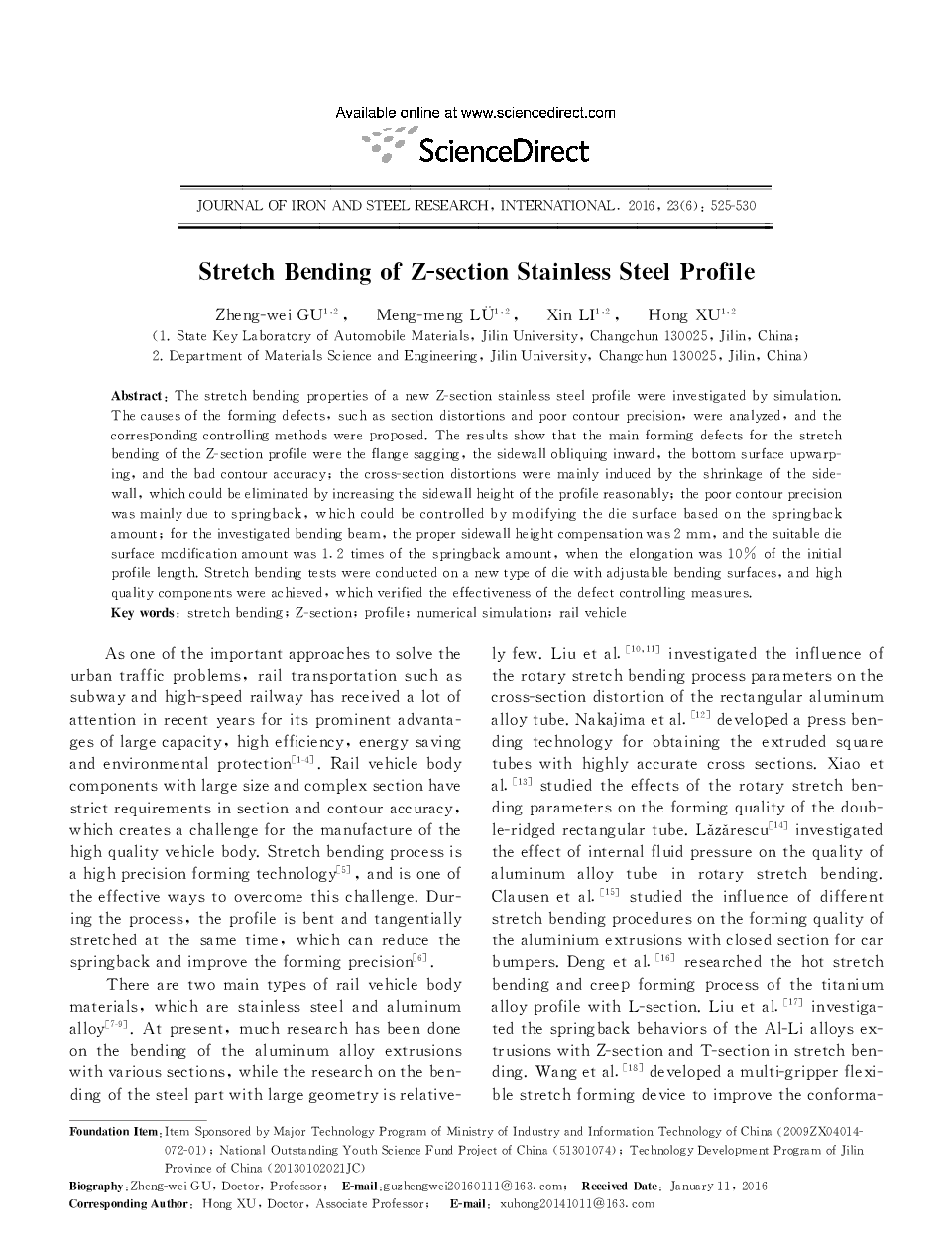| Article ID | Journal | Published Year | Pages | File Type |
|---|---|---|---|---|
| 1628087 | Journal of Iron and Steel Research, International | 2016 | 6 Pages |
The stretch bending properties of a new Z-section stainless steel profile were investigated by simulation. The causes of the forming defects, such as section distortions and poor contour precision, were analyzed, and the corresponding controlling methods were proposed. The results show that the main forming defects for the stretch bending of the Z-section profile were the flange sagging, the sidewall obliquing inward, the bottom surface up warping, and the bad contour accuracy; the cross-section distortions were mainly induced by the shrinkage of the sidewall, which could be eliminated by increasing the sidewall height of the profile reasonably; the poor contour precision was mainly due to springback, which could be controlled by modifying the die surface based on the springback amount; for the investigated bending beam, the proper sidewall height compensation was 2 mm, and the suitable die surface modification amount was 1.2 times of the springback amount, when the elongation was 10% of the initial profile length. Stretch bending tests were conducted on a new type of die with adjustable bending surfaces, and high quality components were achieved, which verified the effectiveness of the defect controlling measures.
